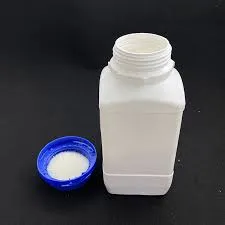Common Plastic Additives Enhancing Performance and Versatility
Plastics have become an integral part of modern life, serving a vast array of applications across various industries. However, the raw polymers derived from petroleum or natural gas often lack the necessary properties required for specific uses. This is where plastic additives come into play. These substances are incorporated into plastics to enhance their performance, improve processing, and increase durability, among other benefits. In this article, we will explore some of the most common plastic additives and their significant roles in the plastics industry.
Types of Plastic Additives
1. Stabilizers One major category of plastic additives is stabilizers, which are essential for protecting plastics from degradation caused by heat, light, and oxidation over time. Heat stabilizers, such as lead or calcium-zinc compounds, are frequently used in polyvinyl chloride (PVC) products to ensure that they maintain their integrity at elevated temperatures. UV stabilizers, on the other hand, absorb harmful ultraviolet light to prolong the lifespan of outdoor plastic products, making them essential for items like garden furniture and outdoor signage.
2. Plasticizers Plasticizers are added to increase the flexibility and workability of plastics, particularly polyvinyl chloride (PVC). By interfering with the molecular interactions in the polymer matrix, plasticizers such as phthalates and adipates reduce the viscosity of the material, making it easier to process and mold. This is crucial for products that require a certain degree of flexibility, such as cables, flooring, and various consumer goods. However, due to health concerns surrounding certain plasticizers, there has been a shift towards safer alternatives in recent years.
common plastic additives

3. Fillers Fillers are used to improve the bulk properties and enhance the cost-effectiveness of plastic materials. Common fillers include talc, calcium carbonate, and silica, which can decrease the overall production cost by reducing the amount of polymer needed. Fillers can also improve mechanical properties such as rigidity and toughness. For instance, talc is often used in polypropylene products to enhance stiffness and heat resistance, making it suitable for automotive parts and consumer goods.
4. Flame Retardants Safety is a primary concern in the design of plastic materials, particularly in applications where flammability is a risk. Flame retardants are added to reduce the flammability of plastics and to slow down the spread of fire. Brominated compounds and phosphorus-based flame retardants are commonly used to achieve this. For example, these additives are crucial in electronics, furnishing, and construction materials to meet stringent fire safety standards.
5. Colorants Colorants, including pigments and dyes, are essential for creating aesthetically pleasing products. They enhance the visual appeal of plastics and allow for differentiation in the marketplace. Organic and inorganic pigments are widely used to provide a range of colors, while dyes are often used for transparent or translucent applications. Colorants must be compatible with the base polymer to ensure uniform distribution and stability over time.
Conclusion
The use of plastic additives is critical to the performance and functionality of plastics in numerous applications. Through the manipulation of properties such as flexibility, durability, and safety, these additives enhance the versatility of plastic materials, making them suitable for the diverse needs of industries ranging from automotive and construction to consumer electronics and packaging. As technology continues to advance, the development of new, safer, and more effective additives will shape the future of plastic production, enhancing sustainability while meeting consumer demands. Whether through improved mechanical properties or greater safety standards, the role of plastic additives remains vital in the ongoing evolution of plastic materials.

